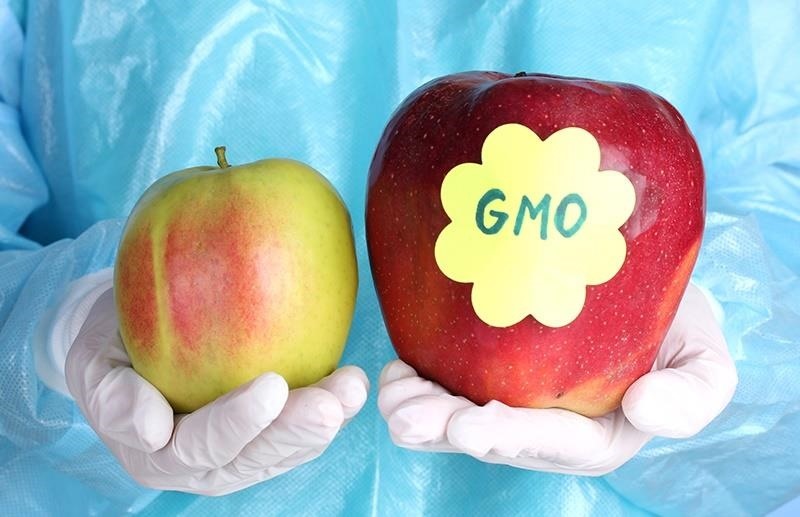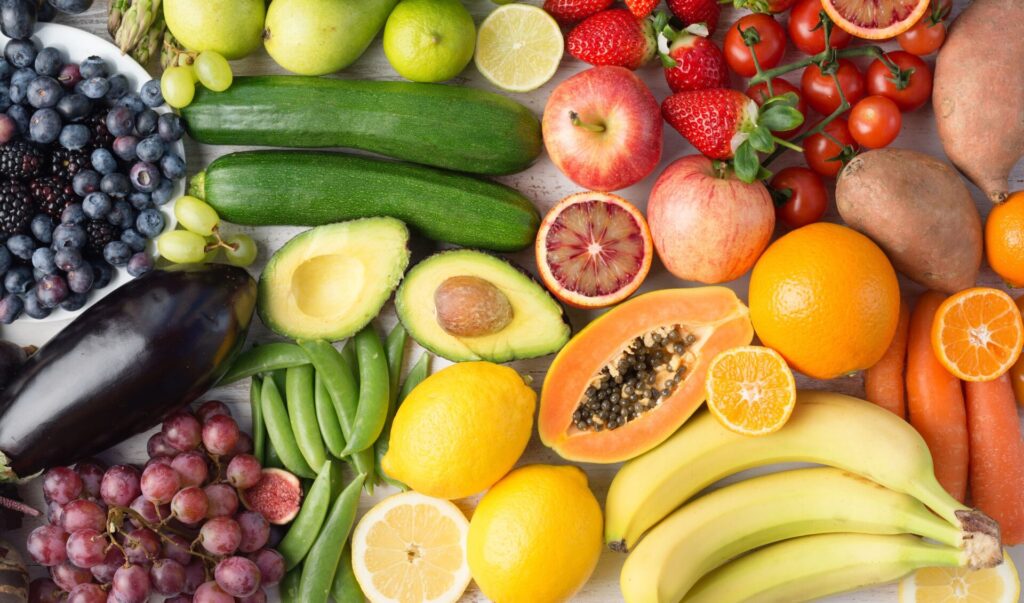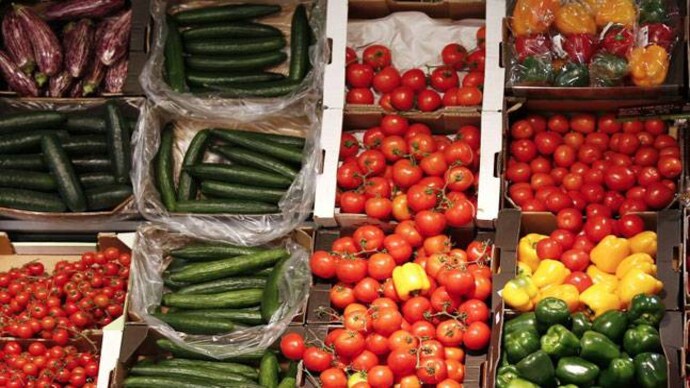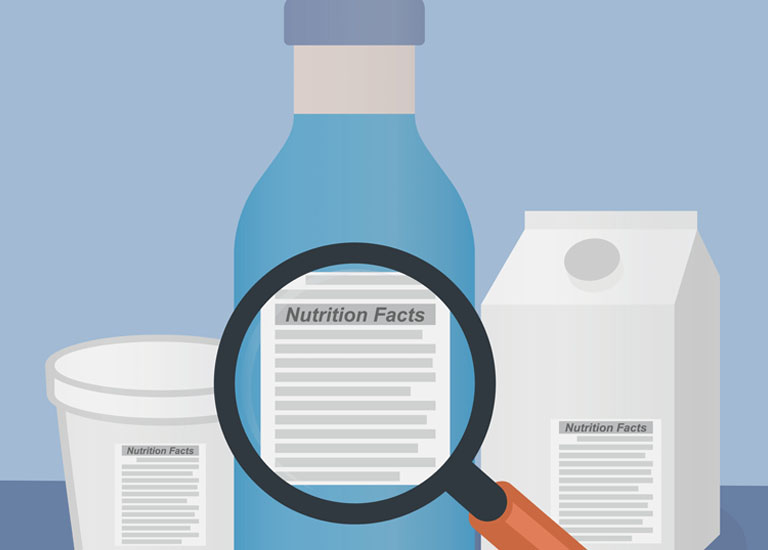In today’s complex food landscape, deciphering labels on produce can be daunting. With terms like “organic,” “conventional,” and “GMO” often thrown around, consumers are left wondering about the implications for their health and the environment. This article aims to shed light on these labels, providing a comprehensive understanding of organic, conventional, and GMO produce.
Just as decoding food labels helps consumers make informed choices about their nutrition, understanding the variety of choices of ice cream cone edibles allows individuals to select cannabis-infused treats that suit their preferences and dietary needs.
Organic Produce: Cultivating Nature’s Way

Organic farming has gained popularity in recent years, driven by a growing demand for pesticide-free and environmentally sustainable produce. When you see the label “organic” on fruits or vegetables, it signifies that the product has been grown without synthetic pesticides, fertilizers, or genetically modified organisms. Instead, organic farmers rely on natural methods like crop rotation, composting, and biological pest control to nurture their crops.
Deciphering the complexities of producing labels is akin to balancing financial accounts with precision, a task streamlined by loan servicing software quickbooks.
Choosing organic produce offers several benefits. Firstly, it reduces exposure to harmful chemicals commonly found in conventional farming practices. Studies have shown that organic fruits and vegetables contain fewer pesticide residues, making them a safer option for consumers, especially vulnerable populations like children and pregnant women. Additionally, organic farming promotes soil health and biodiversity, fostering ecosystems that are resilient to pests and diseases without relying on chemical interventions.
Transitioning to organic farming, however, comes with its challenges. Organic agriculture typically requires more labor and resources than conventional methods, leading to higher production costs. As a result, organic produce may come with a higher price tag, making it less accessible to some consumers. Furthermore, the yield of organic crops can be lower compared to conventional farming, which may pose logistical challenges in meeting the growing demand for organic food.
As consumers become more conscious of the impact of their choices, the demand for sustainable alternatives like foam sculptures rises.
Despite these challenges, the organic movement continues to thrive, driven by consumer demand for healthier and more sustainable food options. By supporting organic farming practices, consumers not only prioritize their health but also contribute to the preservation of the environment for future generations.
Conventional Produce: Balancing Efficiency and Yield
In contrast to organic farming, conventional agriculture relies heavily on synthetic inputs like pesticides, fertilizers, and genetically modified seeds to maximize crop yields. When you encounter fruits and vegetables labeled as “conventional,” it indicates that these products have been grown using conventional farming methods, which prioritize efficiency and scalability.
When consumers delve into understanding the nuances of organic, conventional, and GMO produce, they often seek clarity on their dietary choices, much like how passengers look for reliability and comfort when booking a limo service in Seattle.
The adoption of conventional farming practices has significantly increased agricultural productivity, allowing farmers to meet the demands of a growing global population. By utilizing chemical fertilizers and pesticides, conventional farmers can control pests and weeds more effectively, leading to higher yields and lower production costs. Additionally, genetically modified crops, or GMOs, have been developed to confer traits such as pest resistance and drought tolerance, further enhancing crop resilience and productivity.
However, the reliance on synthetic inputs in conventional agriculture raises concerns about the long-term sustainability of these practices. The widespread use of pesticides and fertilizers can lead to environmental degradation, including soil erosion, water pollution, and loss of biodiversity. Moreover, the overuse of chemical pesticides has been linked to adverse health effects in both humans and wildlife, highlighting the need for more sustainable alternatives.
When it comes to making informed choices about food, understanding labels is crucial, especially for those considering peptides for weight loss. Organic, conventional, and GMO produce labels provide valuable insights into farming practices and potential health implications, guiding consumers toward options aligned with their preferences and health goals.
Despite these challenges, conventional agriculture remains the dominant method of food production globally, supplying the majority of the world’s food supply. While critics advocate for a transition towards organic and regenerative farming practices, proponents of conventional agriculture argue that it is necessary to feed a growing population and ensure food security.
GMO Produce: Navigating the Genetic Landscape
Genetically modified organisms (GMOs) have become a contentious issue in the food industry, sparking debates about safety, ethics, and environmental impact. GMOs are organisms whose genetic material has been altered using genetic engineering techniques to introduce desirable traits such as pest resistance, herbicide tolerance, or improved nutritional content.
As consumers become more discerning about the foods they consume, they seek clarity on how different farming practices impact the quality and safety of their food, driving the demand for transparent labeling and information. With the advent of millimeter wave products, which utilize innovative technology to enhance crop yields and sustainability, consumers are increasingly curious about their implications on organic and conventional farming methods.
When it comes to produce, GMO crops are widely used in conventional agriculture to enhance crop yields and reduce losses due to pests and diseases. Common GMO crops include soybeans, corn, cotton, and canola, which are used as ingredients in various food products. However, the presence of GMOs in the food supply chain has raised concerns among consumers regarding their potential health and environmental effects.
Proponents of GMOs argue that they offer several benefits, including increased crop yields, reduced pesticide use, and enhanced nutritional value. For example, genetically modified golden rice has been developed to address vitamin A deficiency in developing countries, potentially saving millions of lives. Additionally, GMOs have the potential to mitigate the impacts of climate change by developing crops that are more resilient to extreme weather conditions.
Just as consumers seek clarity in labeling, individuals in need of orthopedic treatments in Phoenix also seek clarity in their options.
However, critics of GMOs raise concerns about their long-term safety and environmental impact. Some studies suggest that GMOs may have unintended consequences, such as the development of resistant pests and weeds, genetic contamination of non-GMO crops, and disruption of ecosystems. Furthermore, the lack of long-term studies on the health effects of GMO consumption has fueled skepticism among consumers and regulatory agencies.
Navigating the landscape of GMO produce requires careful consideration of the potential risks and benefits. While GMOs have the potential to address pressing challenges in agriculture and food security, their widespread adoption raises ethical, environmental, and health concerns that warrant further research and regulatory oversight. As consumers, it is essential to stay informed and advocate for transparent labeling and responsible use of GMOs in the food supply chain.
If you’re on a quest for knowledge about your food, exploring alternative wellness practices like kambo in Austin TX can also enhance your understanding of holistic living.
Nutritional Considerations: Exploring the Health Benefits of Different Produce

Beyond farming practices, the nutritional content of produce also varies depending on factors such as soil quality, growing conditions, and post-harvest handling. While organic produce is often touted for its perceived health benefits, studies comparing the nutritional profiles of organic and conventional produce have yielded mixed results. Some research suggests that organic fruits and vegetables may contain higher levels of certain nutrients and antioxidants, while others find no significant differences.
Decoding labels on produce can be as meticulous as the attention to detail given in dog grooming services in Seattle WA, where each pet receives personalized care.
However, it’s essential to recognize that the presence of pesticides and other chemical residues on conventional produce does not necessarily translate to adverse health effects. Regulatory agencies set strict limits on pesticide residues in food to ensure safety for consumers. Washing and peeling fruits and vegetables can further reduce pesticide exposure, making conventional produce a viable option for those on a budget or with limited access to organic options.
When it comes to GMO produce, concerns about nutritional quality primarily revolve around the potential for unintended consequences of genetic modification. While GMO crops are rigorously tested for safety before entering the market, the long-term effects of consuming genetically modified foods remain a subject of debate and ongoing research. As such, consumers may choose to exercise caution and opt for non-GMO alternatives when available.
Just as organic produce aims to promote health through natural farming practices, orthopedic physical therapy in Chicago aims to enhance wellness through holistic approaches to musculoskeletal health.
Overall, prioritizing a diverse and balanced diet rich in fruits and vegetables, regardless of their farming methods or genetic makeup, is key to supporting overall health and well-being. By focusing on the nutritional content and diversity of our food choices, we can make informed decisions that promote optimal health for ourselves and our families.
Environmental Impact: Assessing the Sustainability of Agricultural Practices
In addition to human health considerations, the choices we make about the produce we consume also have profound implications for the environment. Organic farming practices, such as crop rotation, composting, and reduced chemical inputs, are often touted for their environmental benefits, including improved soil health, reduced water pollution, and increased biodiversity.
When comparing organic, conventional, and GMO produce, it’s essential to consider the environmental implications of waste disposal, which can be effectively managed with dumpster rental services. Dumpster rental facilitates proper waste segregation and disposal, aligning with the sustainable practices often associated with organic farming.
Transitioning towards organic agriculture can contribute to mitigating the impacts of climate change by sequestering carbon in the soil and reducing greenhouse gas emissions associated with synthetic fertilizer production and application. Additionally, organic farms typically use less water than conventional farms, relying on natural methods like cover cropping and mulching to retain soil moisture and reduce irrigation needs.
However, critics argue that organic farming may not be scalable enough to meet global food demand without sacrificing land use efficiency. Conventional agriculture, on the other hand, is often criticized for its reliance on monoculture crops, which can lead to soil degradation, erosion, and loss of habitat for native species.
Just as luxury interior design services in Lighthouse Point, FL meticulously select materials and elements to create opulent living spaces, discerning consumers similarly deliberate over the quality and origins of their produce.
When it comes to GMO crops, proponents argue that they offer potential environmental benefits, such as reduced pesticide use and enhanced crop resilience to climate change. For example, genetically modified crops engineered for drought tolerance or nitrogen fixation could help mitigate the impacts of water scarcity and soil degradation in agricultural regions prone to environmental stressors.
Ultimately, the sustainability of agricultural practices depends on a complex interplay of factors, including soil health, water management, biodiversity conservation, and climate resilience. By adopting a holistic approach to food production that prioritizes environmental stewardship, farmers and consumers alike can work towards building a more resilient and sustainable food system for future generations.
Economic Considerations: Examining the Cost-Benefit Analysis of Different Production Methods
In addition to health and environmental factors, economic considerations also play a significant role in shaping our food choices. Organic produce often comes with a higher price tag compared to conventional counterparts, reflecting the increased labor and resource inputs required for organic farming practices. While some consumers are willing to pay a premium for organic produce, others may find it financially challenging to incorporate organic options into their grocery budgets. While you’re exploring the differences between these produce types, you’ll find that just as fire features installation in Green Bay enhances outdoor spaces, organic, conventional, and GMO produce each offer unique benefits and considerations for health and sustainability.
Conventional agriculture, with its emphasis on efficiency and scalability, has traditionally dominated the global food market, driving down prices and increasing accessibility for consumers. However, the low cost of conventional produce often does not account for the hidden costs associated with environmental degradation, public health impacts, and subsidies that support industrial agriculture.
On the other hand, critics argue that organic farming is more labor-intensive and yields lower outputs per acre compared to conventional methods, making it less economically viable for large-scale commercial operations. Additionally, the certification process for organic farming can be costly and time-consuming for farmers, further adding to the price premium of organic produce.
If you compare the three types of produce; you’ll find that just as a laser clinic in Markham offers various treatments tailored to individual needs, each type of produce caters to different preferences and concerns.
When it comes to GMO crops, the economic landscape is complex, with companies investing heavily in research and development to bring genetically modified seeds to market. While GMOs offer potential benefits such as increased yields and reduced input costs for farmers, concerns about intellectual property rights, seed monopolies, and farmer autonomy have sparked debates about the concentration of power in the hands of biotechnology companies.
Navigating the economic considerations of different production methods requires balancing short-term costs with long-term benefits for farmers, consumers, and the broader food system. By considering factors such as production costs, market demand, and externalities associated with different farming practices, stakeholders can work towards creating a more equitable and sustainable food economy.
Consumer Awareness: Empowering Informed Choices in the Marketplace

As consumers, our purchasing decisions have the power to drive change in the food industry and shape the future of agriculture. By educating ourselves about the various labels and production methods used in food production, we can make informed choices that align with our values and priorities. Whether it’s choosing organic produce to support sustainable farming practices or opting for non-GMO alternatives to avoid genetically modified foods, each decision we make sends a message to food producers and policymakers. Just as different farming methods yield varying types of produce, product design services cater to diverse client needs and preferences, ensuring the creation of innovative and appealing products.
However, navigating the complexities of food labels and marketing claims can be challenging, especially with conflicting information and greenwashing tactics prevalent in the marketplace. As such, it’s essential to critically evaluate the sources of information and seek out reputable sources such as scientific studies, consumer advocacy groups, and independent certifications like the USDA Organic label.
In addition to individual consumer choices, collective action, and advocacy play a crucial role in driving systemic change in the food industry. By supporting policies and initiatives that promote transparency, sustainability, and social equity in food production and distribution, we can help create a food system that prioritizes the health and well-being of people and the planet.
Empowering consumer awareness and engagement requires collaboration across sectors, including government, industry, academia, and civil society. By working together to foster a culture of transparency and accountability in the food industry, we can build a more resilient and equitable food system that meets the needs of present and future generations. If you view food choices through the lens of an elopement photographer, you’ll notice the beauty in the diversity of produce options available and the importance of capturing the essence of each.
Conclusion
In conclusion, decoding labels on produce is essential for understanding the complex landscape of modern agriculture and making informed choices about the food we eat. Whether it’s considering the health implications of organic versus conventional produce, assessing the environmental impact of different farming practices, weighing the economic considerations of production methods, or empowering consumer awareness in the marketplace, each aspect of food production and consumption carries implications for human health, environmental sustainability, and social equity. By engaging in dialogue, education, and advocacy, we can work towards building a more transparent, equitable, and sustainable food system for all.
